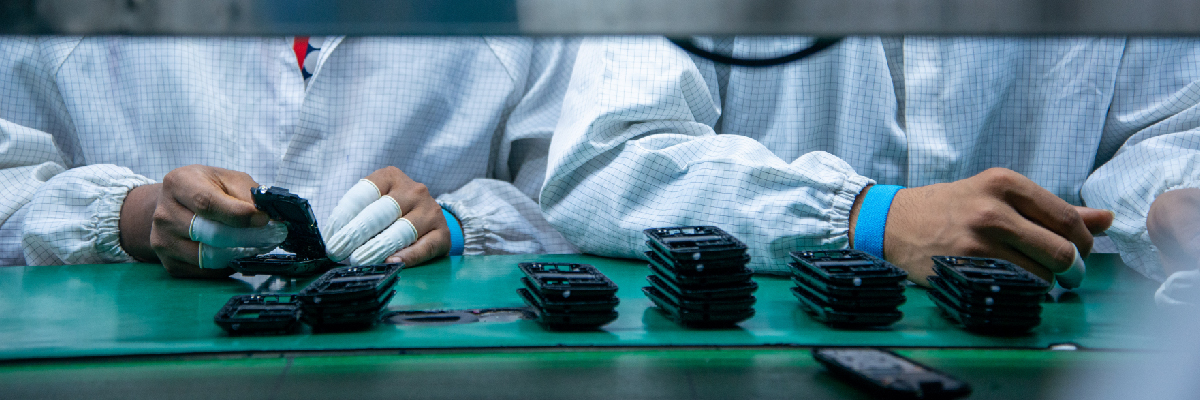India’s profound economic transformation in the last decade has been fuelled by a series of landmark reforms and innovative initiatives. One such major thought-after step toward building a resilient India has been the Make in India move.
Launched in 2014, this has been at the forefront of this change – driving India’s emergence as the fastest-growing large economy in the world. In FY 2023-24, the Indian economy grew by 8.2% in real terms.
As India looks forward to its centennial year in 2047, the success of Make in India will be the backbone to achieving its goal of becoming a developed nation.
Ease of doing business reforms
One of the cornerstones over the past decade has been achievements and the improvement in the ease of doing business in India. Recognizing the need to foster investor confidence, the government implemented a series of reforms aimed at streamlining processes, regulations and promoting healthy competition. In the process, over 42,000 compliances have been reduced and 3,800 provisions decriminalized.
Key reforms such as the Insolvency and Bankruptcy Code, the Goods and Services Tax and the Jan Vishwas (Amendment of Provisions) Act alongside the start-up reforms have been instrumental in making India a global business hub. These improvements have bolstered investor confidence, making India a preferred destination for business and manufacturing investments.
Production Linked Incentive Scheme
The Make in India initiative has significantly reshaped the manufacturing landscape through the Production Linked Incentive (PLI) Scheme, introduced in 2020. This scheme—backed by a budget allocation of ₹1.97 lakh crore—has enhanced domestic production capacity, attracted investments and boosted India’s export competitiveness.
Multiple sectors, including electronics, telecom, pharmaceuticals and automobile have benefited immensely from this scheme. India’s export base has expanded, contributing to the country's integration into global value chains. The focus on high-value manufacturing sectors has not only created jobs but is also positioning India as a dependable player in the global supply chain.
Foreign Direct Investment and export growth
Foreign Direct Investment (FDI) reforms have also played a crucial role in driving India’s industrial growth. Over the last 10 financial years (2015-24), FDI inflow has increased by 119%, reaching $667 billion, compared to $304 billion in the previous 10 financial years (2005-14). These investments have bolstered India’s production capabilities and increased exports, further embedding the nation in global trade networks.
India is now exporting more value-added and high-end products. For example, from being a mobile phone importer in 2014-15, when only 5.8 crore units were produced domestically and 21 crore units used to get imported, India produced 33 crore units in 2023-24, with only 0.3 crore units imported while exporting around five crore units.
Drugs and pharmaceutical exports increased from $15.07 billion in FY 2013-14 to $27.85 billion in FY 2023-24. Similarly, the defence exports have witnessed a surge of 31 times during the same timeframe, showcasing India’s growing role as a reliable supplier in the global supply chain. The government’s strategic policy interventions aim to drive manufacturing exports to $1 trillion by 2030.
Sustainable growth
India’s growth story is not just about economic expansion, it's also about embracing sustainable development. The Panchamrit action plan underscores India’s commitment to combating climate change. The resolution aims for India to achieve a non-fossil fuel energy capacity of 500 GW, meet 50% of its energy needs from renewable sources, bring carbon intensity below 45% and reduce carbon emissions by one billion ton by 2030 to achieve net-zero emissions by 2070.
Complementing this is the National Green Hydrogen Mission, which aims to establish India as a global hub for green hydrogen production and export. This mission—with an expected investment of ₹8 lakh crore—will generate over six lakh jobs and reduce reliance on imported natural gas and ammonia, leading to savings of ₹1 lakh crore.
Innovation and R&D
Looking at the future, India is now focusing on high value-added manufacturing and research and development (R&D) as key drivers of its economic ambitions. The government’s ongoing efforts to create an innovation ecosystem will foster cutting-edge and next-gen technologies across sectors, spanning aerospace, advanced electronics and biotechnology. Notably, India has jumped 42 spots in the Global Innovation Index ranking since 2015 and is ranked 39th currently. These efforts are crucial in ensuring that India remains competitive in global markets, producing innovative and value-added products.
As India celebrates a decade of Make in India, the initiative’s impact on the nation’s industrial and economic growth is immense. By focusing on key areas such as manufacturing competitiveness, FDI reforms, sustainability and innovation, India is well on its way to becoming a global manufacturing powerhouse. The combined effect of these reforms is driving India toward its goal of becoming a developed economy by 2047.
- https://static.pib.gov.in/WriteReadData/specificdocs/documents/2024/jul/doc2024722351601.pdf
- https://pib.gov.in/PressReleasePage.aspx?PRID=2039117
- https://static.pib.gov.in/WriteReadData/specificdocs/documents/2024/sep/doc2024925401801.pdf
- https://pib.gov.in/PressReleasePage.aspx?PRID=2058603
- https://pib.gov.in/PressReleasePage.aspx?PRID=2031963#:~:text=India%20from%20being%20a%20large,5%20crore%20units%20were%20exported.
- https://pib.gov.in/PressNoteDetails.aspx?NoteId=152038&ModuleId=3®=3&lang=1
- https://pib.gov.in/PressReleaseIframePage.aspx?PRID=2053689
- https://economictimes.indiatimes.com/news/economy/indicators/india-jumps-42-spots-in-9-years-ranks-39th-in-global-innovation-index-2024/articleshow/113721955.cms?from=mdr


